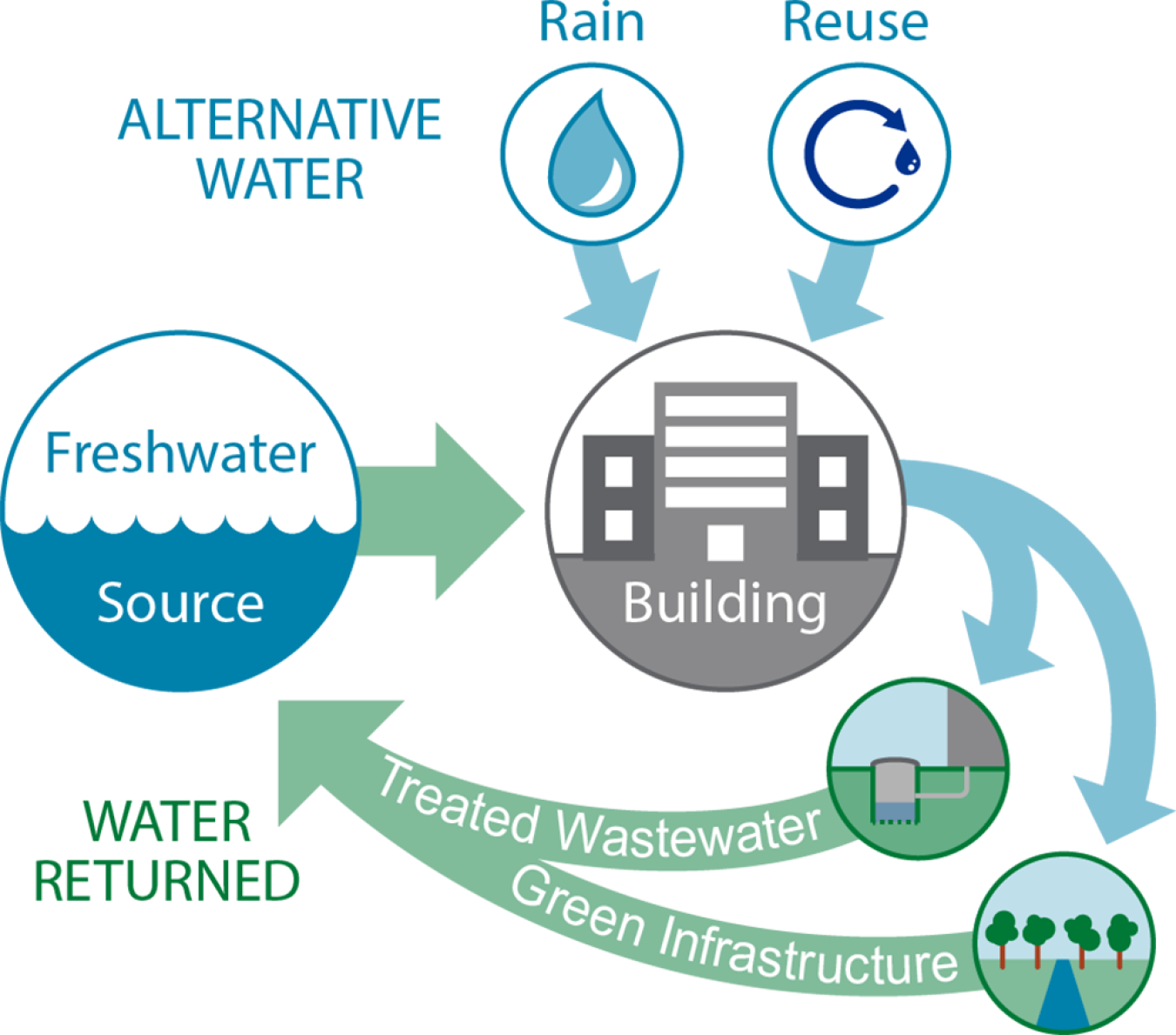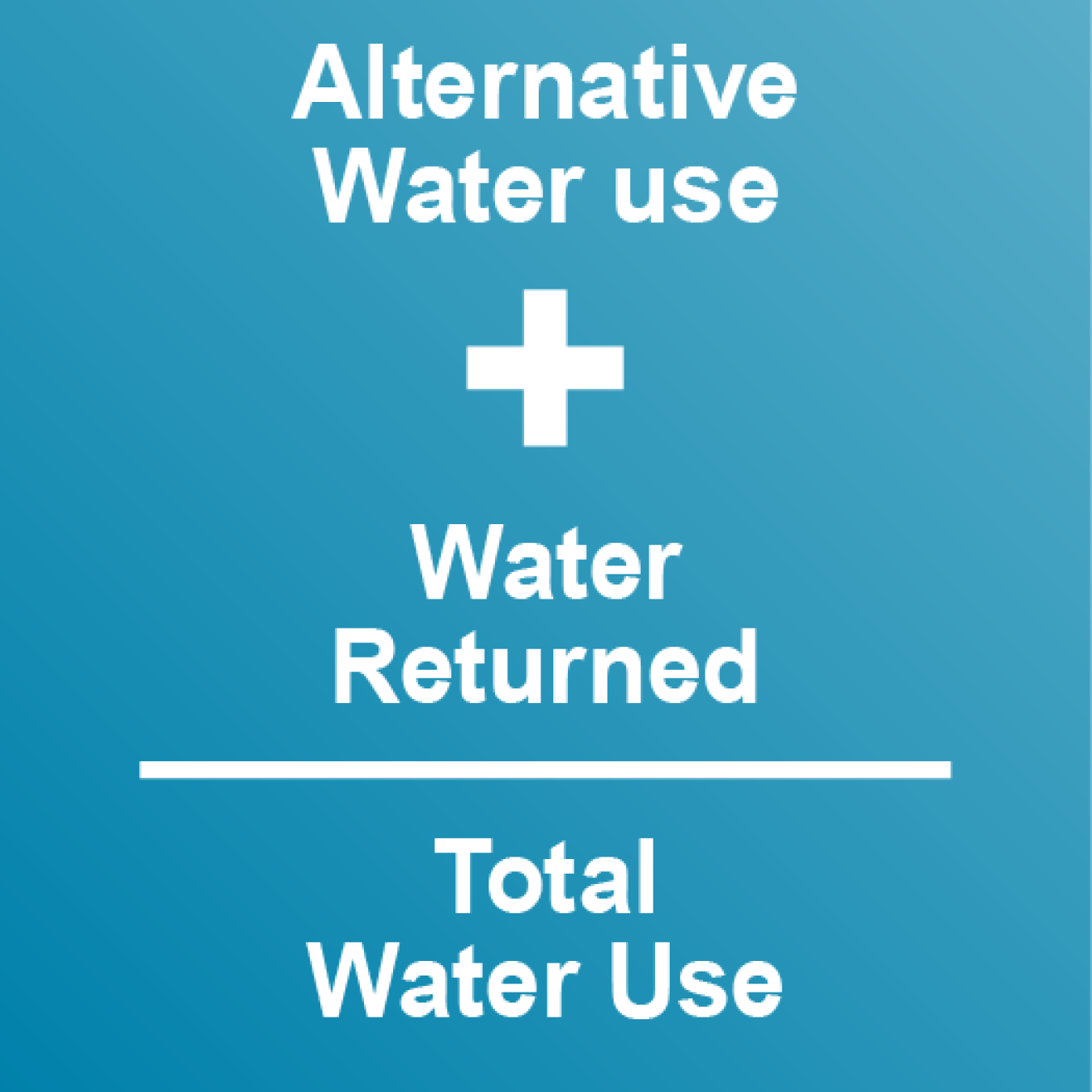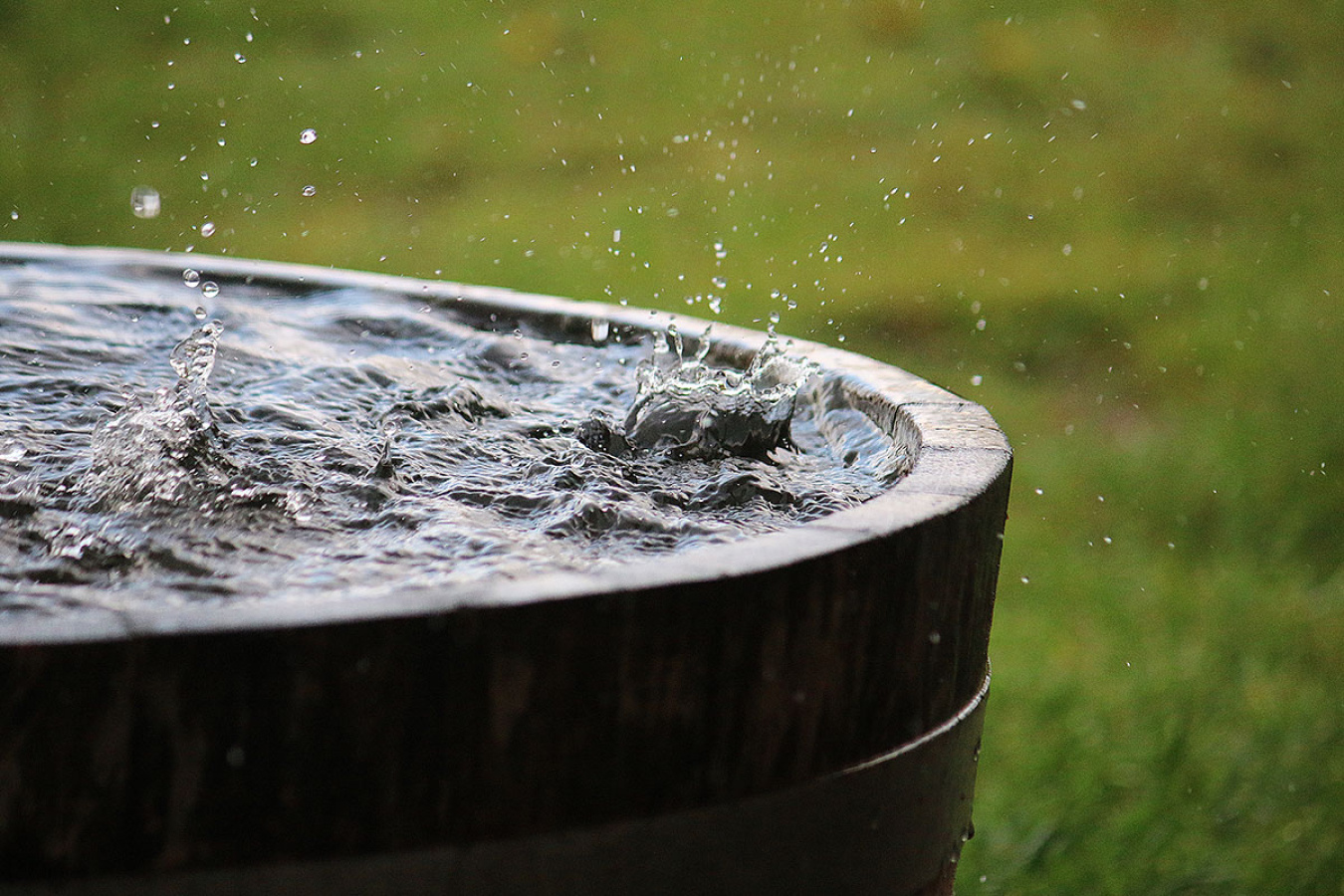Want strategies?
See the Net Zero Energy, Water, and Waste Handbooks for information on how to conserve resources and reduce waste.
The Federal Energy Management Program provides information about low or zero water and offers strategies on how to design and implement low or zero water buildings.
By following low or zero water strategies, federal agencies can construct buildings and campuses that preserve natural water resources, help improve water infrastructure, and secure water to meet mission-critical needs.
What is a low or zero water building?
A low or zero water building (constructed or renovated) is designed to:
- Minimize total water consumption
- Maximize alternative water sources
- Minimize wastewater discharge from the building and return water to the original water source.

Low or zero water use creates a water-neutral building where the amount of alternative water used and water returned to the original water source is equal to the building's total water consumption.
The goal of low or zero water is to preserve the quantity and quality of natural water resources with minimal deterioration, depletion, and rerouting by utilizing potential alternative water sources and water efficiency measures to minimize the use of supplied freshwater. This principle can be expanded to the campus level.
Ultimately, a low or zero water building (or campus) completely offsets water use with alternative water plus water returned to the original water source.
However, if the building is not located within the watershed or aquifer of the original water source, then returning water to the original water source will be unlikely. In those cases, a low or zero water strategy would depend on alternative water use.
Measuring Low or Zero Water
Understanding how low or zero water can be measured is important so that you can determine if your building has met the water use objective. Low or zero water can be represented by a simple formula where:

- Total water use is the amount of water consumed within the boundaries of a building from all sources (potable and non-potable including freshwater and alternative water) over the course of a year.
- Alternative water use is the amount of water consumed within the boundaries of a building from alternative water sources (such as harvested rainwater, captured condensate from air handling units, and reclaimed wastewater) rather than freshwater sources over the course of a year. In a low or zero building, the total annual water use should be offset by alternative water in part or completely.
- Water returned is the amount of water collected from the building systems (green infrastructure and on-site treated wastewater) and returned back to the original water source over the course of a year. In a low or zero water building, the total annual water use should be offset by water returned to the original source in part or completely.
To verify that the building is operating at low or zero, collect annual water use data for each water flow:
- Potable water use
- Non-potable water use (from freshwater sources)
- Alternative water use
- Wastewater treated on-site and returned to original water source
- Stormwater infiltrated to the original water source through green infrastructure.
Sum all freshwater use and alternative water use to calculate the building's total annual water use. Next, sum alternative water use and treated wastewater and stormwater returned to the original source. If this sum is equal to or greater than the total annual water use, then the building is considered low or zero water.
Note: If stormwater infiltration is not monitored, infiltration can be roughly estimated by multiplying the amount of precipitation received within the boundaries of the building over the course of a year by the capture capacity (area) of green infrastructure features, and deducting any potential losses of captured water considering the infrastructure design. These losses may include evaporation of the captured water, runoff (if the green infrastructure feature only provides a percent reduction in runoff), or transpiration by plant coverage.
| Term | Definition |
|---|---|
Alternative water | A sustainable water source not derived from fresh-, surface-, or groundwater sources. Alternative water includes:
A low or zero water building (or campus) uses alternative water sources to offset the use of freshwater. See the Federal Energy Management Program's Alternative Water Sources Maps. |
Freshwater | Water sourced from surface or groundwater such as lakes and rivers. |
Original water source | Surface water and groundwater sources that are within the same local watershed and aquifer of the buildings' (or campus') water supply. Local watersheds are considered to be in hydrologic unit group 12. Learn more about watershed boundaries. |
Water returned | The amount of water collected from the building systems, such as green infrastructure and on-site treated wastewater, and returned back to the original water source over the course of a year. A low or zero water building (or campus) closes the loop on the water system by returning water to the original water source. Wastewater can be treated and recharged. Stormwater can also recharge the original water source through green infrastructure. The total annual water use should be partly or completely offset by water returned to the original source. |
Low or Zero Water Building Examples
The following two examples illustrate the concept of a low or zero water building using buildings with different approaches to achieving low or zero water.

Learn About Low or Zero Design Elements
Provides high-performance design options, considerations, and example projects related to key low or zero water building design elements.

